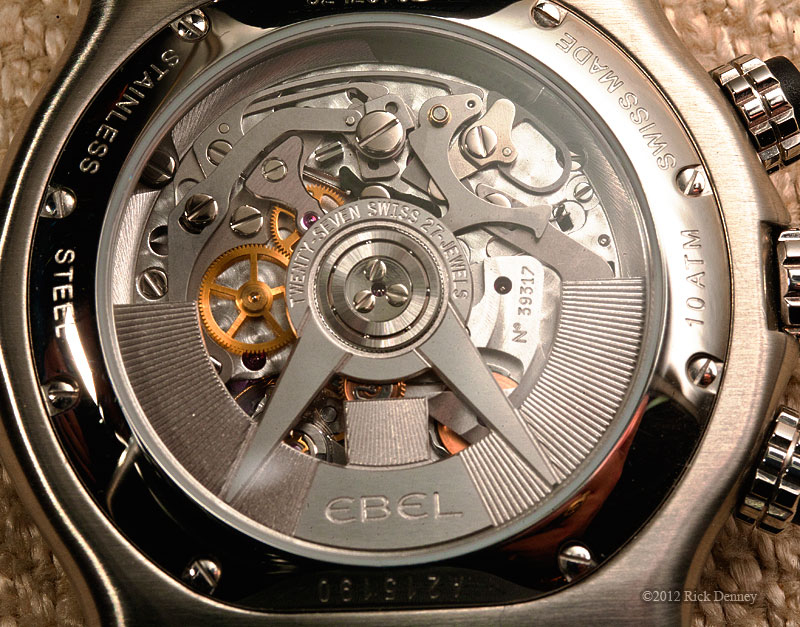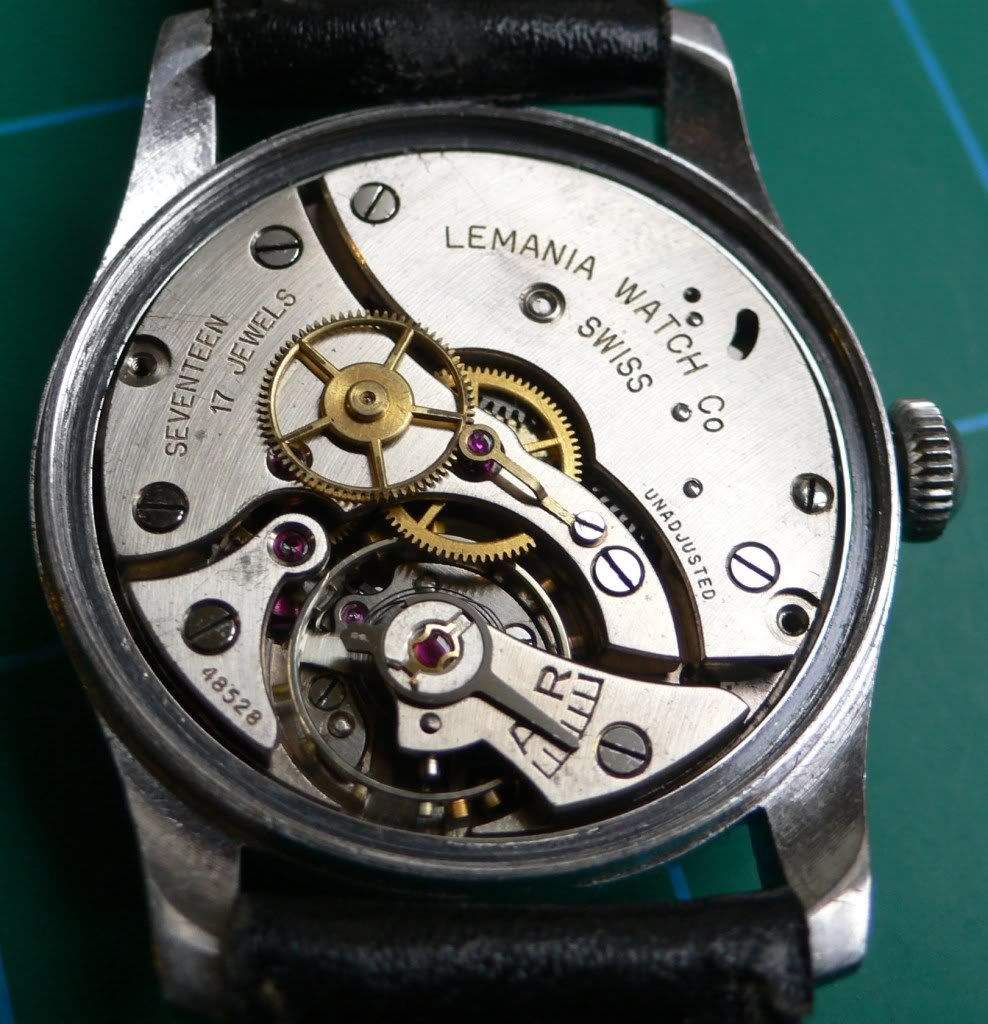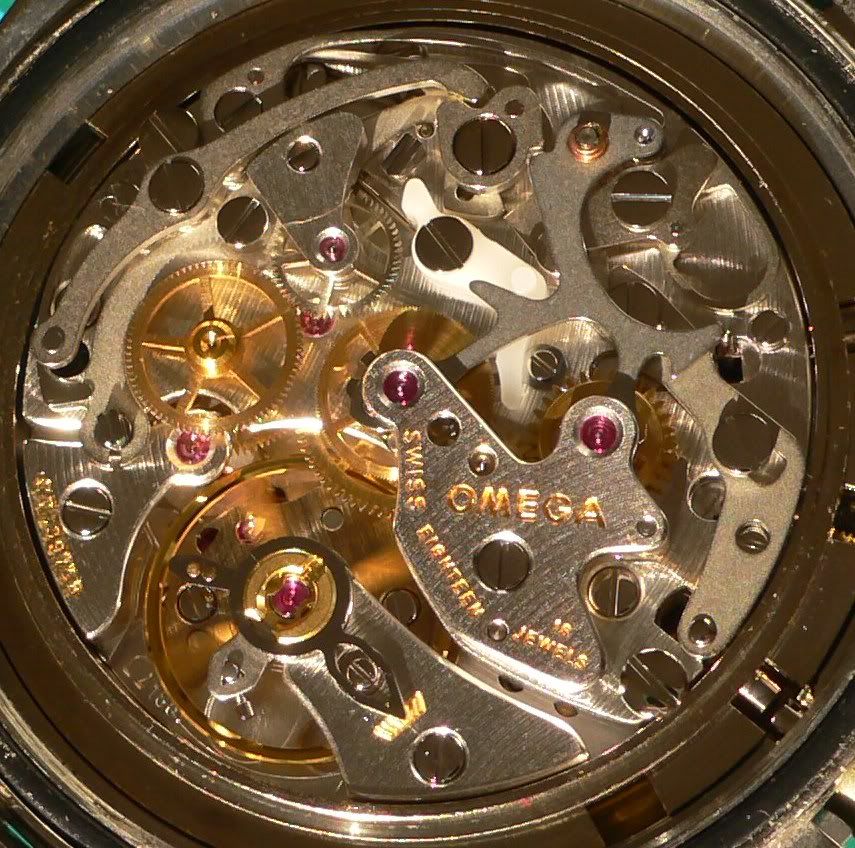-
Nov 25, 2014, 05:59 PM
#1
Tracing the roots of the Ebel 137 (Lemania, Omega, Tissot, Breguet, UN content)
I was preparing an answer for another thread and realized this should be on its own.
The Ebel side of the story is that they had been using the Zenith El Primero since 1982 (the date Ebel claims in their history), when they introduced the Sport Classic Chronograph (aka Chronosport), first with the Zenith 3019PHC (Ebel 134) that was old stock from the production period in the early 70's. The famous story of Charly Vermot hiding the tools and finished ebauches of the El Primero after being order to destroy them made this possible. Blum of Ebel foresaw the comeback of mechanical watches, and despite himself being very successful with quartz watches (five factories in La Chaux-de-Fonds and 500 employees producing high-quality quartz watches for both Ebel and Cartier), he added this one mechanical watch to the collection. When Ebel came out with the updated version, the 1911 Chronosport, in 1986 (to celebrate 75 years of Montres Ebel), it used the Zenith caliber 40.0, the transitional caliber when they first started production again. In 1988, Zenith famously started supplying modified El Primero movements to Rolex for the first automatic Daytona, and even though there are many Ebel Chronosports with the later Zenith caliber 400, Blum realized that he would struggle to get the supply he needed for his flagship watch. So, in 1990, Ebel started development, with Nouvelle Lemania (Nouvelle because they had become independent from what was becoming Swatch), on a replacement. They started with the Lemania 1340, Lemania's first automatic chronograph that came out in 1970. Ebel redesigned some things and improved the jewel count to fully jewel the chronograph train. Ebel also fully acquired all rights to the movement, which became the Ebel caliber 137, introduced in 1995.
In 1994, Ebel was acquired by Investcorp, a Bahrainian investment company. They had also acquired Breguet and Lemania, and Breguet also used the movement in the Type XX and Type XXI.
But most automatic chronographs (with the interesting exception of the Zenith) started life as a hand-wind chronograph, and I started doing some digging. I was looking for several key features of the Ebel 137--the lever actuation system, the big looped start-stop pusher detent spring, and the uniquely shaped cock that carries the lateral engagement wheel for the chronograph.
So, here's the family tree:

Tissot Navigator, with Lemania 872, two-register chronograph which is reportedly a simplification of the 321, the column-wheel movement that was and is used in the Speedmaster. (Photo by LouS.) This movement used the cam-switched mechanism that was first developed for the Lemania 1270, so though this is the first Lemania movement to have my combination of lever actuation, lateral clutch wheel cock, and the big looped spring, it's certainly not a fresh creation from scratch. It built on the whole history of Lemania chronographs to the CH27, which was itself based on the S27, the 27mm base three-hand movement.

Another Tissot Navigator, with a Lemania 872 (photo by Johan).

Lemania 1872 (which, to my eye, is the same as the 872), which started production in 1966, pictured in Roland Ranfft's movement database. Notice the shape of the cock (lower left) that carriers the wheel that connects the fourth wheel (at bottom) and the central seconds hand (in the middle). This is the lateral clutch. At left is the rocking cam that switches the chronograph mechanism. As with all of Roland's photos, the stem is at the top. This movement would have appeared in Lemania-branded chronographs, including those that were made under contract for the South African Air Force. The three-register version with an hour counter is the Lemania 1873.

Here is the Omega 860, which is the same as above, starting in 1968. Of course, Lemania was part of the SSIH conglomerate that was owned primarily by Omega and Tissot. This was the group that joined with ASUAG (dominated by ETA) to create SMH in 1982, and subsequently to become Swatch.
Notice that the pins on the lateral clutch for these are unjeweled--it was expected that the chronograph would only be used intermittently.
This was the base movement that Lemania used to create their first automatic chronograph, the 1340, which came out in 1970.


The Omega 1040, aka Lemania 1340. Tissot had a version as well, the 2170. If we think of the first automatic chronographs, the list is short: The Zenith El Primero (1969), the Seiko 6138 (1969), the Heuer/Hamilton-Buren/Breitling/Dubois-Depraz caliber 11 (which was a Dubois-Depraz 8510 chronograph module on a Buren 1281 tractor, 1969), the Lemania (1970), the Citizen 8100 (1973), and the Valjoux 7750 (1974).

Omega 1040, without rotor, as pictured in this excellent article about the Breguet XX. This is a Lemania 1340, and in this diagram, it's easy to see the lever actuation system and that big looping spring (at top right). But this one was upgraded for accuracy, and was used in the Omega Speedmaster 125, the first COSC-certified chronograph.
In the late 70's, the quartz crisis hit hard, and Lemania was eventually spun off of SSIH when SMH was formed. They found themselves to be independent, selling movements to a range of watch companies. They bought the Longines 990 from SMH and started producing it as the Lemania 8810, for example, which was popular in a range of expensive watches. But in the late 70's, Lemania and its SSIH partners (particularly Omega) replaced this movement with the 5100 series, which was cheaper to produce.
But Ebel, which had revived the Zenith El Primero, did it again by purchasing the rights (with a side deal for Ulysse Nardin) to the 1340 series, in 1990. Starting in 1994, when Ebel was well along the way of productizing their acquisition, they were themselves acquired by Investcorp, who also acquired Nouvelle Lemania to add to Breguet, which they already owned. Thus, Breguet was able to make a flyback version of the 1340 for the Type XX.

Breguet 582, a flyback version of the Lemania 1340, used in the Type XX Aeronvale from the late 90's. Again, the basic features of the movement are clear to see.
In 1999, Investcorp sold Breguet and Lemania to Swatch, and Ebel to LVMH. Ebel still owned the rights to what was now the caliber 137. They performed the assembly in their own workshops (remember--they were a full quartz manufacture), but they contracted with Lemania to make about 40 critical parts. When Lemania was bought by Swatch, that deal came to an end, and they bought a five-year supply of those parts. When they ran out, they contracted with Dubois-Depraz to make those parts, and for the first time, the Lemania 1350 was completely divorced from Lemania.

The Ebel caliber 137, ca. 2007, in a 1911 BTR Chronograph.
Notice that finishing standards, which were rather workaday in 1970, had improved considerably over 40 years. The Ebel movement is as nicely finished as the Breguet 582, and as nicely finished as a Zenith El Primero. In particular, the Ebel BTR in my collection has a more artfully shaped engagement wheel cock, which is not present on either the earlier Breguet or the later UN.
With Ebel's decline in recent years, we might think this movement is done. But that is not the case. Ebel sold this movement to Ulysse Nardin in April, 2012, and it lives on as the UN150.

Ulysse Nardin UN-150, in the current Marine Chronograph. UN has made some significant changes, and the roots of the Lemania 1340 are harder to see, but the DNA is still there.
Rick "cool, huh?" Denney
Last edited by Rdenney; Dec 1, 2014 at 02:33 AM.
More than 500 characters worth of watches.
-
Post Thanks / Like - 8 Likes
-
Nov 25, 2014, 10:45 PM
#2
Very interesting article. Thanks for sharing, Rick
-
Nov 25, 2014, 10:52 PM
#3
Excellent post - thank you!
-
Nov 26, 2014, 06:19 AM
#4
Superb post. I thoroughly enjoyed that.
-
Nov 26, 2014, 06:32 AM
#5
Member


Thanks for this post. The Charles Vermot story is a classic. I'm waiting for Zenith to immortalize him in one of their dramatic videos on their YouTube channel one day. I kind of like the dramatization of most watch videos (not just Zenith) with all of that sincere and intense music and all.
-
Nov 30, 2014, 11:07 PM
#6
-
Nov 30, 2014, 11:41 PM
#7
The Dude Abides


Excellent thread. Very informative info and cool pictures as well.
"Either He's Dead, Or My Watch Has Stopped....."
Groucho Marx
-
Matt, thanks for the additional photos.
The 127x was certainly where I started, given its lever actuation.
That S27 is truly a classic Swiss movement, showing the first implementations of the sweep seconds complication. The fourth wheel arbor carries an additional wheel added to the back of the movement to drive the central seconds hand. My contemporary mid-40's JLC (no pictures, really, as yet) has a similar arrangement, and even a similar bridge layout.

Great minds think alike: The JLC caliber 450, the first JLC with that innovation known as sweep seconds.
The picture of the 865 is exceptionally cool. The single-button chronograph with central minutes is actually easier to understand. Ebel also had a central-minutes version of the 137--the caliber 139. They used a two- or three-pointed hand visible through a sector aperture in the dial to show the minutes scale.
Rick "roots go deep" Denney
More than 500 characters worth of watches.
-
I confess I only use it for two things: setting the seconds instead of a hack and timing 0-60 when I'm feeling silly. I think it's a massively underrated watch though. As you are probably noticing, I really do buy watches on the basis of what is interesting as well as all the normal reasons.




 Likes:
Likes: 







 Reply With Quote
Reply With Quote

















